In the latest round of hostilities between India and Pakistan, the Pakistan Air Force (PAF) demonstrated a level of sophistication and effectiveness that surprised even seasoned military observers. Much of its success was attributed to the integration of Chinese J-10C fighters equipped with the formidable PL-15 air-to-air missile. But what truly set the PAF apart was its ability to conduct multi-domain operations — a capability it has been developing over the past six to seven years. The concept of multi-domain operations has been around for some time but amongst the regional air forces, the PAF is the first to master and demonstrate it in actual combat. This evolution did not occur overnight. It is the culmination of nearly 80 years of institutional growth, strategic alliances, operational experience, and technological integration.
Both the Indian Air Force (IAF) and PAF originated from the same parent organisation, the Royal Indian Air Force. However, over the decades and through four conflicts — 1947–48, 1965, 1971, and the recent aerial engagements following the Pulwama incident in 2019 and the battle that followed the Pahalgam incident of April 2025— the PAF has carved a unique identity and earning international recognition for punching above its weight.
The culture of the PAF at its birth and for some years to follow had not progressed much from the days of the World War II. A recently published book, The Eagles of Destiny: History of the Royal Pakistan Air force and Pakistan Air Force 1947-1971, a study on the evolution of the PAF, records interviews of two veterans who were commissioned into the Royal Indian Air Force: Air Marshal Zafar Chaudry and Air Vice Marshal Khyber Khan. Both believed that there was limited understanding of the air force’s objectives and purposes and little institutional maturity. Consequently, things like flying discipline were weak – ‘a kind of childish and juvenile behaviour’. A good pilot retracted his undercarriage very quickly after takeoff; did a couple of loops over the airfield; on returning from a sortie beat-up (flying very low over) the airfield and then zoom up; and was capable of landing after sunset even if there was considerable light. While converting to another aircraft a pilot was provided with a just a pilot’s manual and there was ‘hardly any briefing or monitoring by senior pilots. In short, a young flight lieutenant literally ‘flew by the seat of his pants”. To add to this was the lack of flying experience up to the level of squadron commanders who had only 5-6 years of service. Consequently, accident rates were high but, in all fairness, high rates were not unusual for newly formed post-war air forces operating legacy WWII aircraft under severe logistical and training constraints.
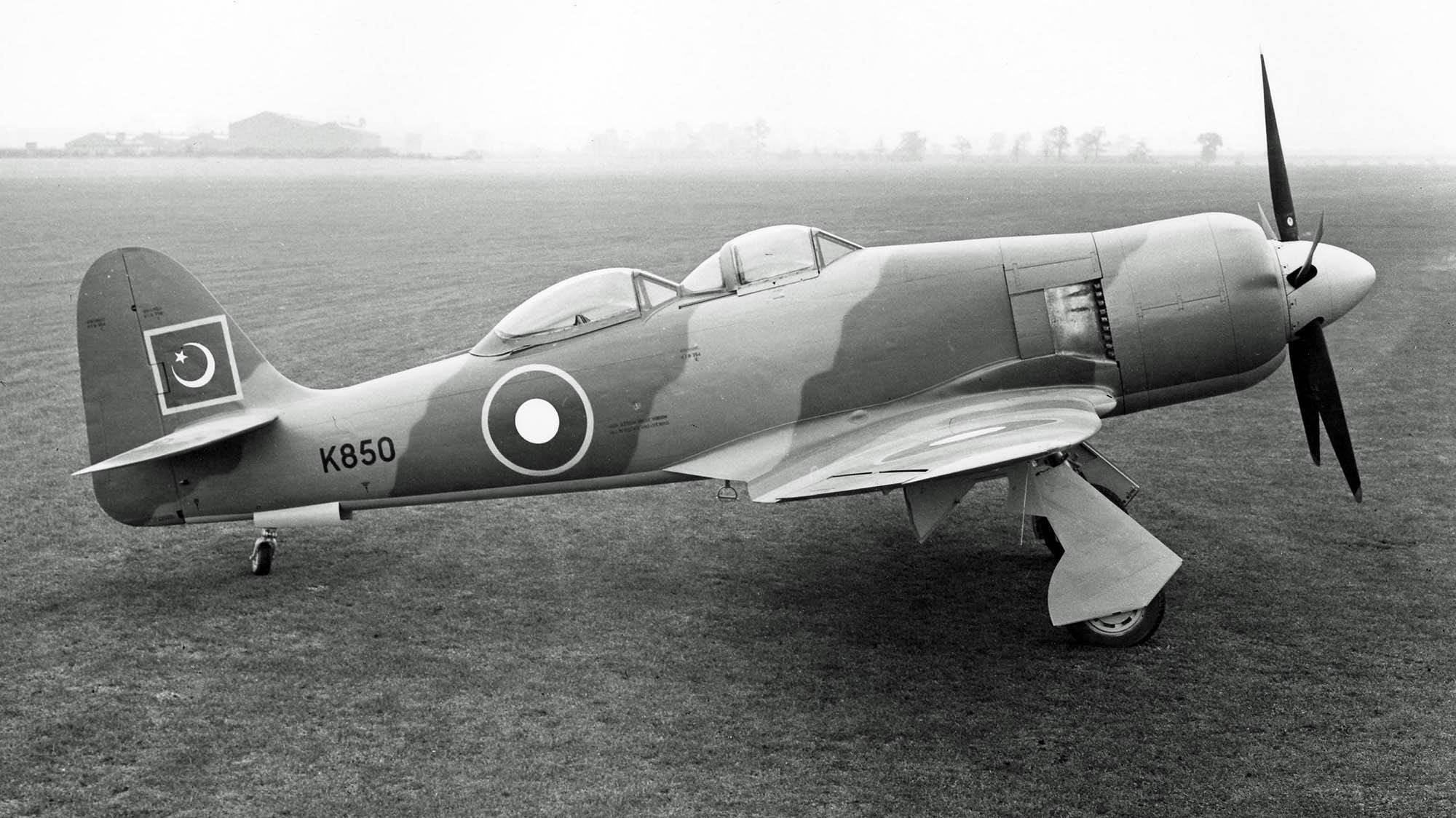
After independence, both the PAF and IAF followed British RAF traditions, but they developed in different ways. PAF’s first chief, AVM Atcherley, chose not to grow the air force quickly. Instead, he focused on improving training and bringing in high-quality recruits by starting air cadet schemes, university air squadrons, and basic flying through aeroclubs. He knew that the brave, risk-taking style of WWII pilots wasn’t enough for long-term success. On the other hand, the IAF became larger more quickly and got strong political support. Indian officers took command earlier, but the focus stayed on buying more aircraft rather than building a clear strategy. The PAF’s slower and more thoughtful approach helped it become more flexible and better trained, while the IAF’s size sometimes hid early problems in planning and teamwork.
The PAF also operated without a formal operational doctrine. It inherited the ethos and tactics of the Royal Air Force, emphasising air defense and interception with a limited, reactive posture. Its combat capabilities were limited to one squadron of Attackers (jets) and three of propeller driven Tempests and later Furies, and focused on basic flying proficiency and limited close air support. Resource constraints meant the PAF lacked strategic depth, joint operations planning, or modern air defense capabilities. Leadership under officers like Air Vice-Marshal Asghar Khan focused on professionalism, training, and advocating for modernisation. However, without external support, the force remained small and tactically oriented.
An early debate in the PAF was its role – whether it had a mission of its own or it was an adjunct to the sea and land forces. The very small size of the PAF lent weight to it being relegated to a supporting arm but the credit goes to the leadership provided by the RAF who argued that ‘never was there military defence problem that so much needed a strong air force’. They also argued that a strong air force capable of striking back at the enemy is also a deterrence. ‘Eagles of Destiny’ notes that the RPAF never established an official doctrinal document, but the inheritance from the RAF meant that this aspiration as an independent air force and the belief that an air arm had a distinct mission was ingrained.
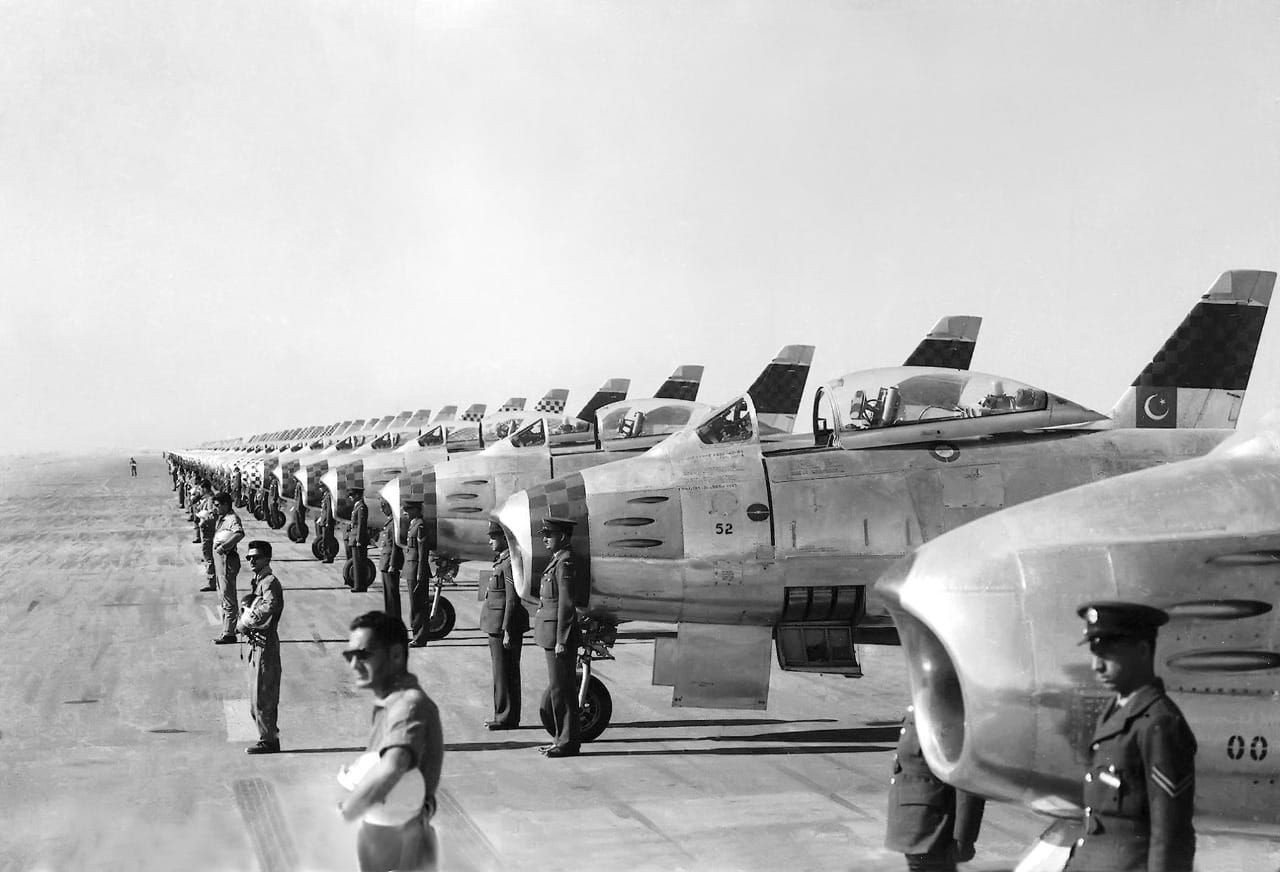
It would take time for an official doctrine to evolve, but Air Vice-Marshal Asghar Khan, the recently appointed young and dynamic Commander-in-Chief of the PAF gave it its first doctrinal identity. He replaced the informal motto inherited from his RAF predecessor—“Are you on the ball?”—with a mission-defining maxim: “train to fight outnumbered.” This shift captured the essence of the PAF’s emerging ethos and was fully aligned with the comprehensive US military assistance programme. The aid not only delivered advanced platforms such as the F-86 Sabre, B-57 Canberra, T-33 trainer, and eventually the F-104 Starfighter, along with radar systems, but also introduced the doctrinal frameworks for modern air operations, planning, and integration. Together, these changes marked the beginning of the PAF’s transformation into a capable, confident, and professional air force, able to compensate for numerical disadvantage through superior training, tactics, and leadership.
Pakistani pilots trained in the US and American advisors helped build institutional capacity within the PAF — training programmes, doctrine development, and exposure to Western operational concepts. What made the 1950s and early 1960s truly transformative was not just the acquisition of aircraft but the professional culture that took root. A generation of officers imbibed a sense of discipline, meritocracy, and mission orientation. The Sabre–Starfighter era marked the first time the PAF stood toe-to-toe with a numerically superior IAF, and the 1965 war became the litmus test of its mettle. Despite being outnumbered, PAF pilots flew with audacity and precision, downing Indian aircraft in engagements that became legendary.
During this period, the force was structured around a single-domain warfare philosophy —that is, the domain of air platforms alone, focused almost entirely on achieving air superiority and mastering interception tactics. PAF pilots and planners were exposed to American air combat doctrine, emphasising offensive counter-air operations, defensive counter-air patrols, and interception of intruding bombers or fighters. The PAF also began to build an early command and control (C2) infrastructure. U.S.-supplied radars like the FPS 6 and FPS 20 and manual Ground-Controlled Interception (GCI) systems gave the force its first experience in coordinated air defense. However, no serious attempt to coordinate with land-based electronic warfare, cyber, or space capabilities, which were rudimentary or nonexistent at the time.
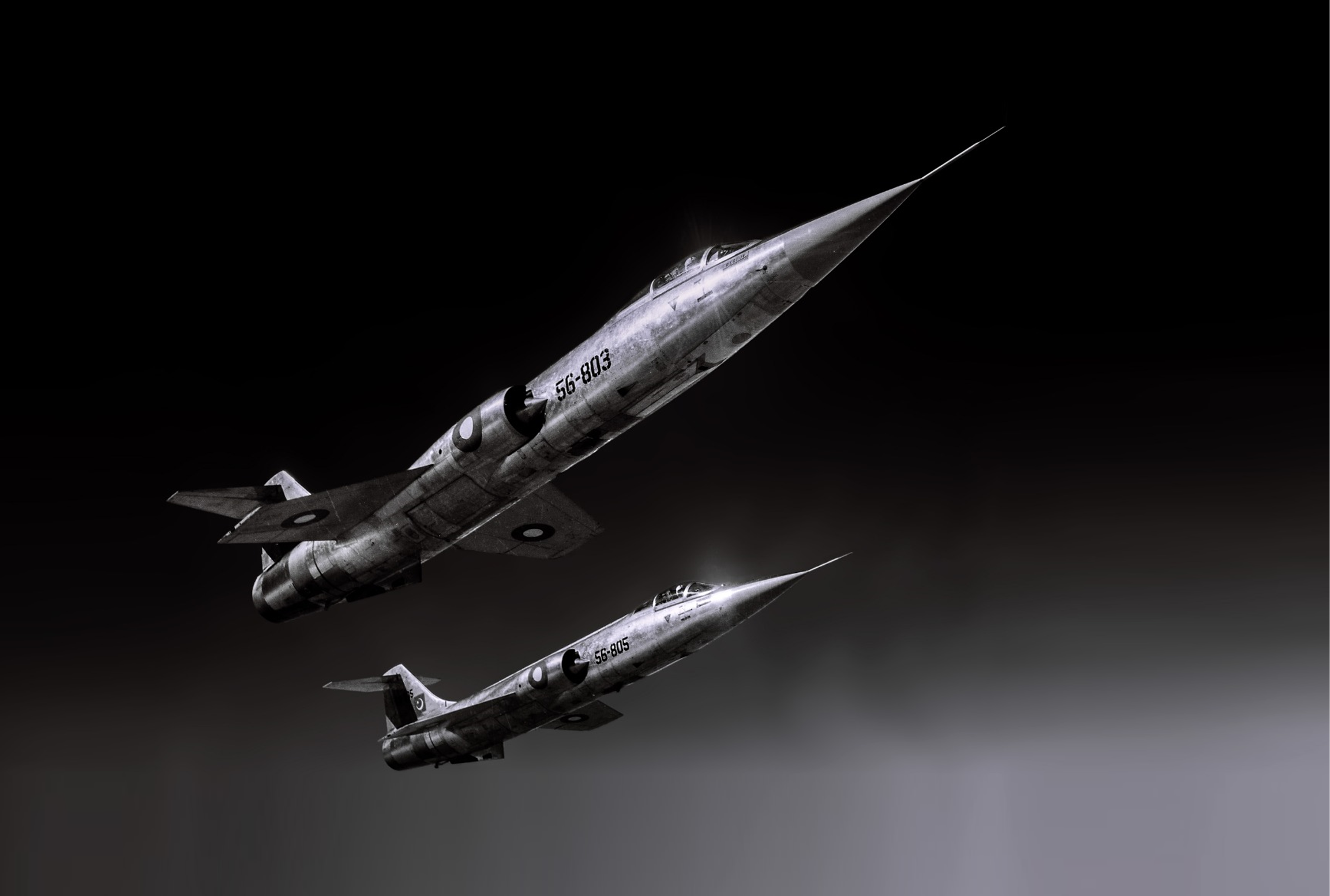
In the 1971 War, the PAF found itself on the defensive, burdened by the strategic disadvantage of operating on two geographically separated fronts. The loss of East Pakistan was a blow, but the war reinforced the need for greater self-reliance and indigenous capacity. To maintain operational readiness, the PAF had to innovate tactically and integrate non-Western systems. Chinese F-6s were inducted in large numbers (from 1966 onwards), and after the 1971 War came the A-5 ground attack aircraft, Soviet-style surface-to-air missiles (SAMs), and radars. These platforms lacked the sophistication of US systems, but the PAF adapted creatively. The F-6, though basic and rugged, was upgraded to meet Western standards thanks to the skill and persistence of the technical branch and supporting industry. During this challenging time, the acquisition of Mirage IIIs from France proved a masterstroke. These aircraft gave the PAF a modern, high-performance interceptor and strike platform that significantly enhanced its combat capabilities. Despite operating a mixed fleet with varying capabilities, PAF pilots trained rigorously to fly diverse aircraft in coordinated strike and air defense roles, maintaining high standards across the board and laying the foundation for an adaptive, flexible fighting force.
Without external input, the PAF developed indigenous air combat tactics tailored to its aircraft's strengths—like fast climb rates of F-6s—while compensating for weaknesses in avionics and weaponry. One of the major steps was towards improvised integration. Ground radars, intercept control, and SAMs were manually synchronised with limited data-sharing tools, fostering the early seeds of integrated battle planning across domains (air, ground, and limited EW). This laid the foundations of an adaptive mindset essential for future multi-domain coordination.
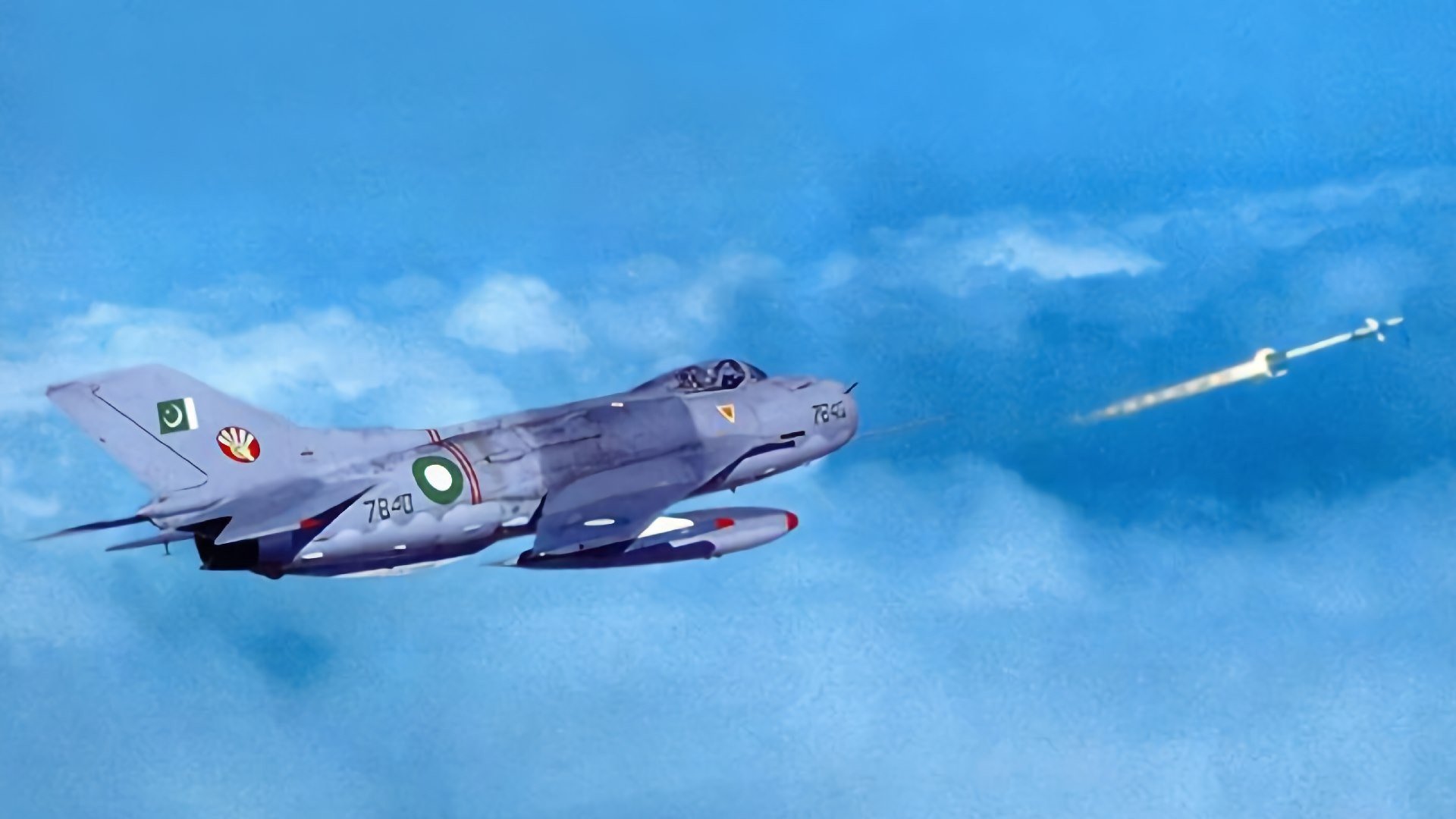
The 1980s marked another leap forward for the PAF. With the Soviet invasion of Afghanistan and Pakistan's renewed strategic relevance to the West, the US resumed military assistance, leading to the induction of the F-16 Fighting Falcon — a multirole jet that quickly became the backbone of the PAF fleet. Its arrival not only modernised the force with advanced avionics, weapons systems, and interoperability with Western platforms, but also trained a new generation of pilots in both air-to-air and air-to-ground operations. More importantly, the F-16 introduced a new concept of warfare: integration into a broader command-and-control network. While the aircraft itself was impressive, its real value lay in vastly improved data exchange between the cockpit and ground controllers. This ushered in a new era of situational awareness — where pilots could access a real-time tactical picture derived from ground radars, AWACS, and other sensors. This evolution laid the groundwork for what was later witnessed over Kashmir, where F-16 pilots benefited from a far superior understanding of the battlespace compared to others flying older-generation aircraft.
However, the era of dependence on the US was not without its pitfalls. Sanctions following Pakistan’s nuclear tests in 1998, and later restrictions under the Pressler Amendment, exposed the vulnerabilities of relying on a single foreign supplier. In contrast, India continued to diversify its sources, importing fighters from the Soviet Union and later from France and Britain. Ironically, this diversity led to logistical and doctrinal challenges that hampered operational readiness.
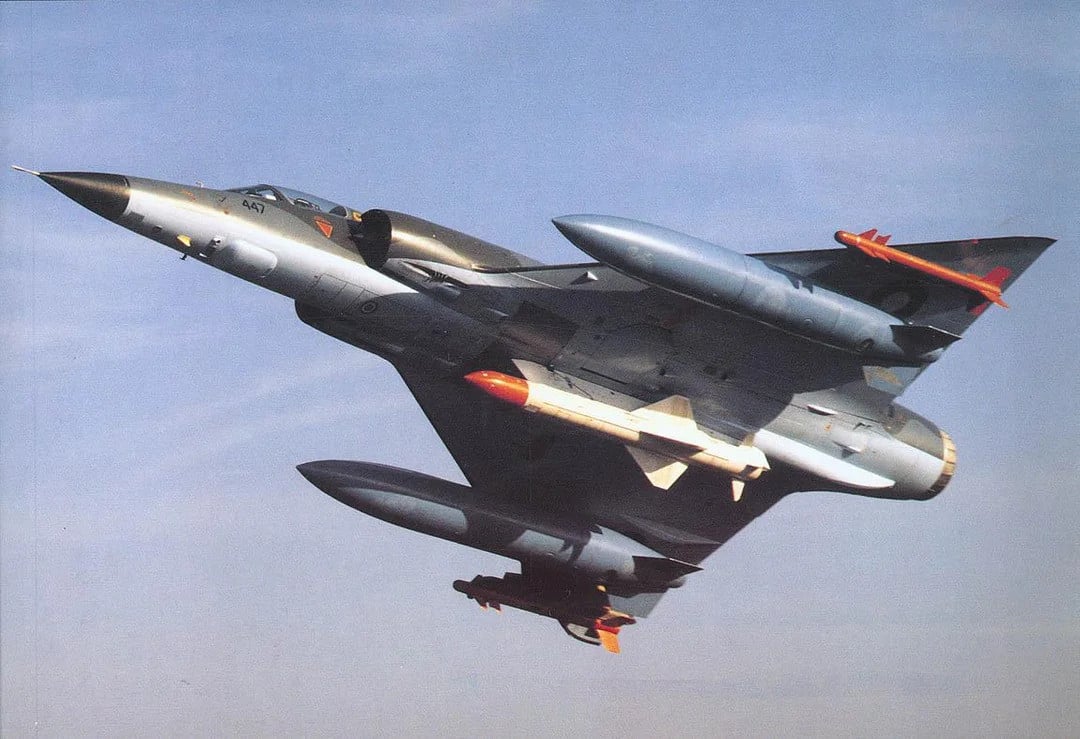
The 1990s and early 2000s marked a crucial transitional period for the PAF, during which the force began to shift from a platform-centric, single-domain force to a doctrine-driven, network-aware air arm. This change was largely a response to regional strategic developments, the widening technological gap with India, and the PAF's need to remain credible despite Western sanctions and equipment shortages following the Pressler Amendment.
A cornerstone of this evolution was the deepening strategic partnership with China, which filled the vacuum left by the West. The PAF and Chinese aviation industry, particularly the Chengdu Aircraft Corporation, began close collaboration — first on technology transfers, and later on co-development projects such as the JF-17 Thunder. This partnership not only provided affordable and customisable platforms but also exposed PAF engineers and planners to new modes of technical integration, mission planning systems, and avionics fusion, paving the way for network-centric thinking.
Meanwhile, Indian investment in high-end platforms like the Su-30MKI, AWACS, and indigenous cruise missiles heightened the PAF’s awareness of Information Superiority as a key determinant in future wars. As a result, the PAF began exploring intelligence, surveillance, and reconnaissance (ISR) capabilities more seriously. The limited but targeted introduction of UAVs for tactical ISR, ground-based radar upgrades, and more advanced mission debriefing tools reflected this emerging doctrinal shift.
Another vital development during this period was the growing interest in electronic warfare (EW). The PAF started training squadrons in basic electronic countermeasures (ECM), and efforts were made to integrate jamming pods and defensive suites on frontline aircraft. EW began to be seen not just as a support tool, but as a potential force multiplier in future conflicts. From 2010 onward, the PAF laid the groundwork for true multi-domain thinking. The term 'multi-domain operations' refers to the integration of capabilities across air, land, sea, space, and cyberspace to overwhelm adversaries across all spectrums of conflict. While originally a US military concept, its essence was adopted by the PAF through hard-earned lessons and technological adaptation.
During this period, the PAF also initiated and developed Link-17, its own indigenous tactical data link. Developed by the National Engineering and Scientific Commission (NESCOM) and the Air Weapons Complex, Link-17 was a response to US reluctance to provide access to secure NATO-standard data links such as Link-16. Link-17 was designed to enable secure, jam-resistant, real-time communication between PAF aircraft, ground controllers, and AEW&C platforms. It allows for tactical picture sharing across platforms like the JF-17, J-10C, and the Erieye and ZDK AEW&Cs. It also supports encrypted, low-probability-of-intercept transmissions, a critical feature in contested electromagnetic environments. By the mid-2010s, Link-17 had become a core part of the PAF’s network-centric warfare doctrine. It was fully integrated into frontline aircraft and simulators, and embedded in command-and-control infrastructure at PAF bases. This gave the PAF a sovereign C4ISR capability and enabled real-time coordination between airborne and ground assets, transforming operational planning and execution.
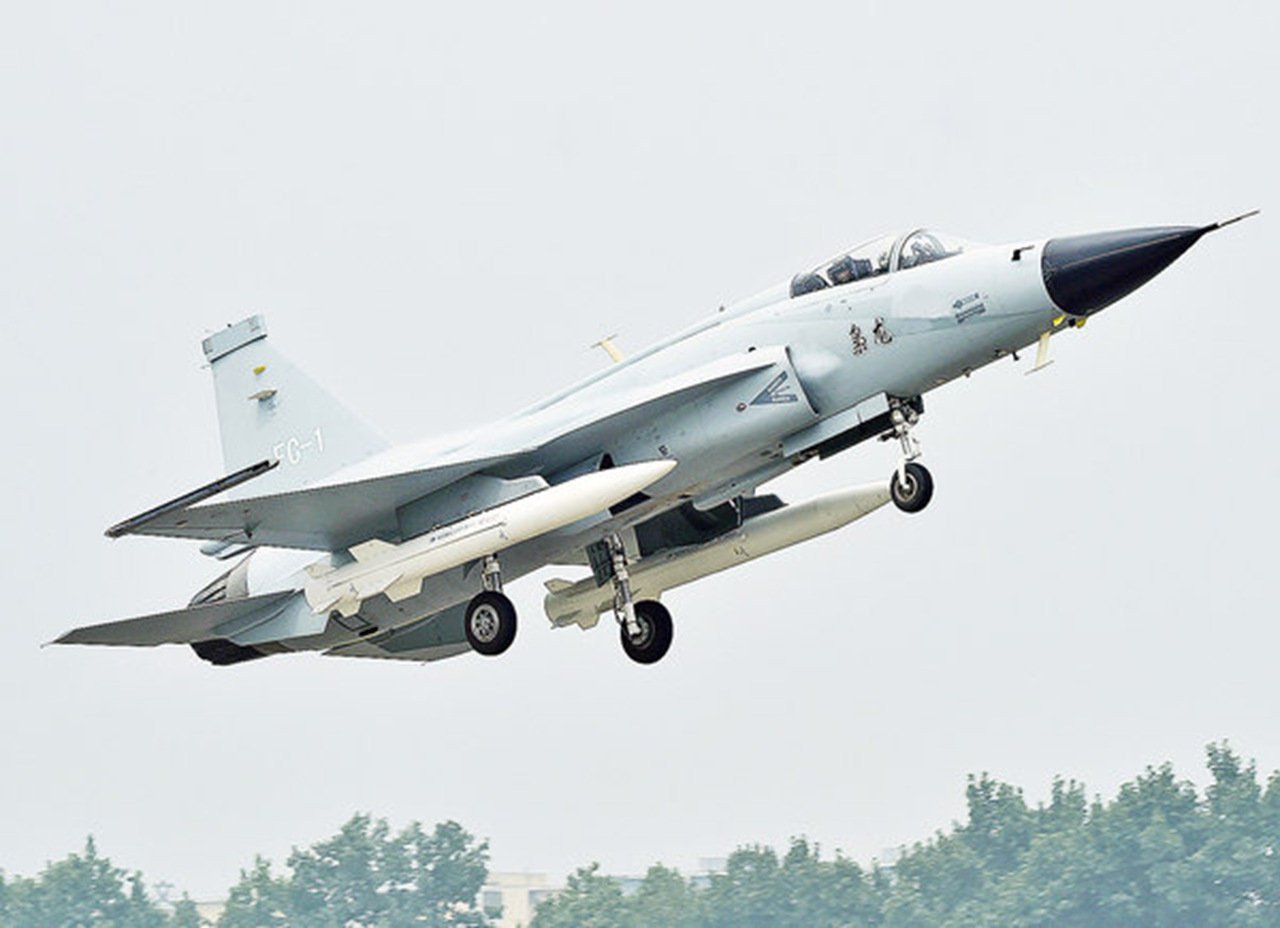
Despite operating a mix of modern platforms, the IAF lacked a secure, indigenous tactical data link system for many years. The Integrated Air Command and Control System (IACCS), initiated in the 2000s, provided a backbone for ground-based radar and command coordination, but fell short of enabling full airborne and platform-to-platform integration. A tactical data link equivalent to NATO’s Link-16 was envisioned as part of India’s broader Network Centric Warfare (NCW), but progress was slow and uneven. By the late 2010s, India began developing Software Defined Radios (SDRs) through the Defence Research and Development Organisation (DRDO) and Bharat Electronics Limited (BEL) to allow secure communications across platforms. However, a unified, encrypted, real-time tactical data link network connecting fighters, AEW&C aircraft, and SAM systems remains incomplete. The IAF’s efforts were hampered by its highly diversified inventory of Russian, French, and Indian aircraft, which complicated integration. Additionally, delays by DRDO, overreliance on foreign vendors, and a lack of doctrinal urgency toward multi-domain operations contributed to the lag.
The late 1990s saw the PAF increasingly engaged in simulated exercises and wargames that emphasized scenario-based planning and joint awareness across different levels of command. Though still not fully joint with the Army or Navy, the seeds of network-centric warfare were sown in this era. In sum, this was a period of doctrinal maturation and conceptual broadening. The PAF began to see itself not merely as an airpower platform, but as part of a networked force, operating in an environment where information, electronic dominance, and interoperability would define outcomes more than individual aircraft or pilots. These realisations laid the groundwork for the full-spectrum multi-domain capability the PAF would strive to build in the coming decades.
One of the key differences between the PAF and IAF that has become more apparent over the past two decades lies in the approach to indigenous development and foreign collaboration. India, in its bid for strategic autonomy, launched the Light Combat Aircraft (LCA) Tejas project in the 1980s. Rather than partnering deeply with a technologically mature partner like the Soviet Union and its successor, it chose to develop the aircraft largely in-house through Hindustan Aeronautics Limited (HAL). Decades later, the programme remains plagued by delays, limited production runs, and concerns over combat performance. Ultimately India took a much-delayed step and collaborated with Russia in developing the Brahmos supersonic missile.
Pakistan, on the other hand, took a more pragmatic route. When the need for an affordable, multirole fighter became critical in the late 1990s and early 2000s, Pakistan collaborated with China to develop the JF-17 Thunder. Unlike India’s HAL-driven model, the JF-17 programme involved close collaboration between the Pakistan Aeronautical Complex (PAC) and Chengdu Aircraft Corporation. Pakistani engineers and technicians were embedded in Chinese factories, participating in every stage — from design and testing to production and upgrades. The result was a combat-proven platform tailored to the PAF’s doctrinal and geographic needs. It could be produced locally, upgraded incrementally, and deployed in large numbers. Today, over 150 JF-17s serve in frontline squadrons. Their success has not gone unnoticed, with exports to countries like Nigeria, Azerbaijan and Myanmar, and interest from others in Africa and Southeast Asia.
Meanwhile, the IAF struggled with maintenance issues across a diversified fleet, procurement delays, and a declining squadron strength. While the Rafale induction in 2020 was a significant boost, it was limited in scale and expensive, and did not fundamentally alter the balance. The IAF's doctrine also remained largely platform-centric, focusing on acquiring advanced aircraft rather than building integrated capabilities across the spectrum. The PAF, by contrast, embraced systems integration. Recognising that modern air warfare is not just about platforms but about networks, sensors, and decision loops, it invested in early warning and control systems. The induction of Swedish Saab 2000 Erieye and Chinese ZDK-03 AWACS aircraft enabled a quantum leap in air situational awareness and battle management. These platforms became the backbone of the PAF’s ability to conduct real-time surveillance, track multiple aerial threats, and coordinate multi-squadron responses.
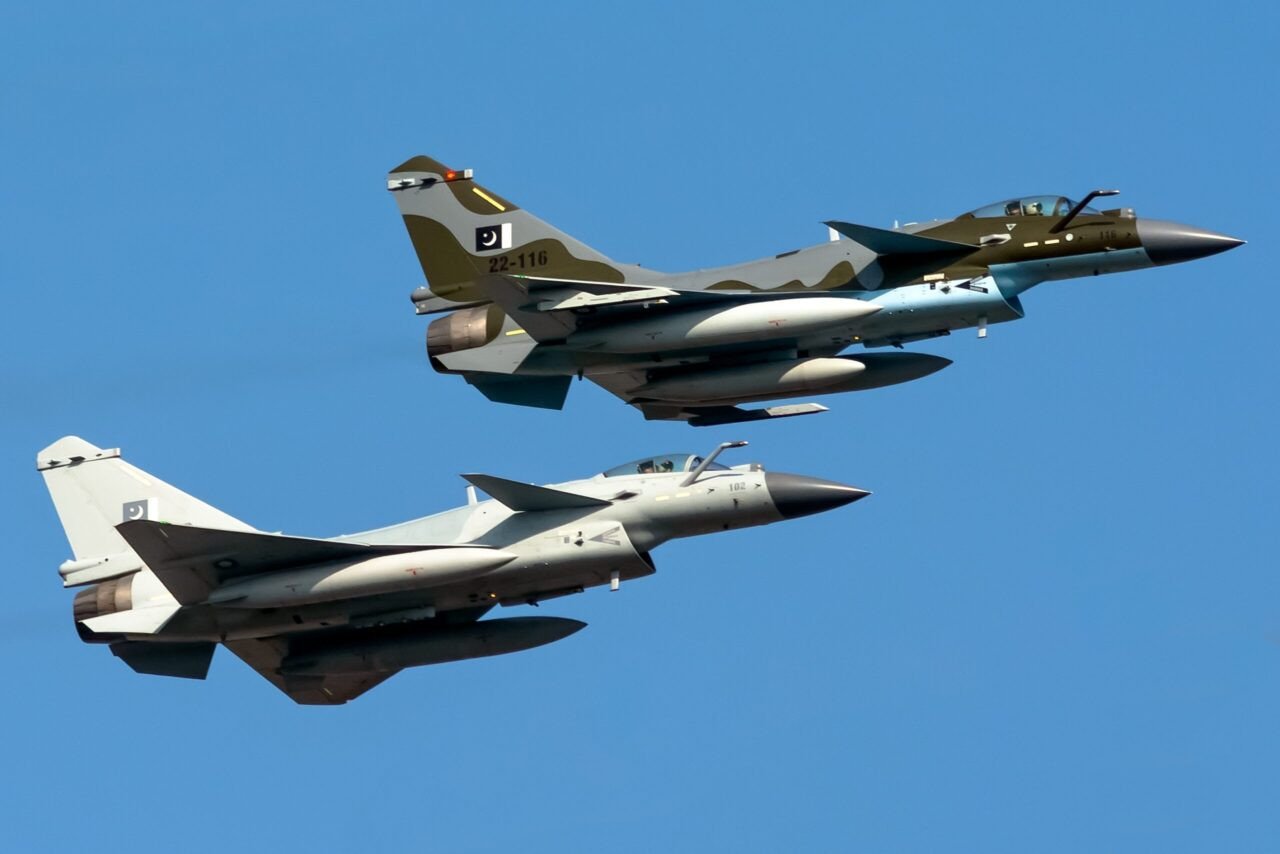
This focus on integration became evident during the post-Balakot aerial skirmishes in February 2019. In response to Indian Mirage strikes across the Line of Control, the PAF launched Operation Swift Retort, a calibrated yet decisive counterstrike. Not only did Pakistani jets penetrate Indian airspace and target military installations, but they also demonstrated electronic warfare, jamming, and coordination via AWACS in a manner that caught the IAF off guard. The downing of an Indian MiG-21, and the subsequent capture of its pilot, was a symbolic and psychological victory that highlighted the PAF’s growing edge in operational planning and execution. Over the past decade, the PAF has also made strategic use of its Chinese partnership to leapfrog generations in capability. The induction of the J-10C — a 4.5-generation fighter with AESA radar and long-range PL-15 missiles — has brought parity, and in some areas, superiority, over IAF platforms. More importantly, the training, tactics, and maintenance ecosystems built around these aircraft have created a sustainable model of airpower.
The IAF, for all its resources and industrial base, has found itself struggling to translate numbers into capability. Bureaucratic inertia, overcentralised planning, and a risk-averse culture have prevented it from taking bold steps toward doctrinal reform. The PAF, in contrast, has shown agility, cohesion, and clarity of purpose. Its focus on quality over quantity, pragmatic alliances, and integration of multi-domain capabilities has allowed it to emerge as a credible regional air force.
As both air forces look toward the future, with programmes like India’s AMCA and Pakistan’s Project AZM (fifth-generation initiatives), the race will be shaped not only by manned aircraft but by a plethora of aerial vehicles, cyber warfare, space-based assets, and artificial intelligence. The PAF’s challenge will be to maintain its edge with limited resources, with resilience, professionalism and predicting revolutionary changes in warfare based on conflicts around the world like the Russo-Ukrainian War.
Author’s note
I am grateful to Capt Ejaz Haq for gifting me a copy of Eagles of Destiny: The History of the Royal Pakistan Air Force and Pakistan Air Force 1947–1971, and to its co-author Yawar Mazhar for vetting this article and offering valuable insights. Thanks also to aviation enthusiast Franciszek Grabowski for sharing his draft of Hatching of Falcons and providing helpful feedback.
Syed Ali Hamid is a retired Pakistan Army major general and a military historian. He can be contacted at syedali4955@gmail.com
All facts and information are the sole responsibility of the writer
